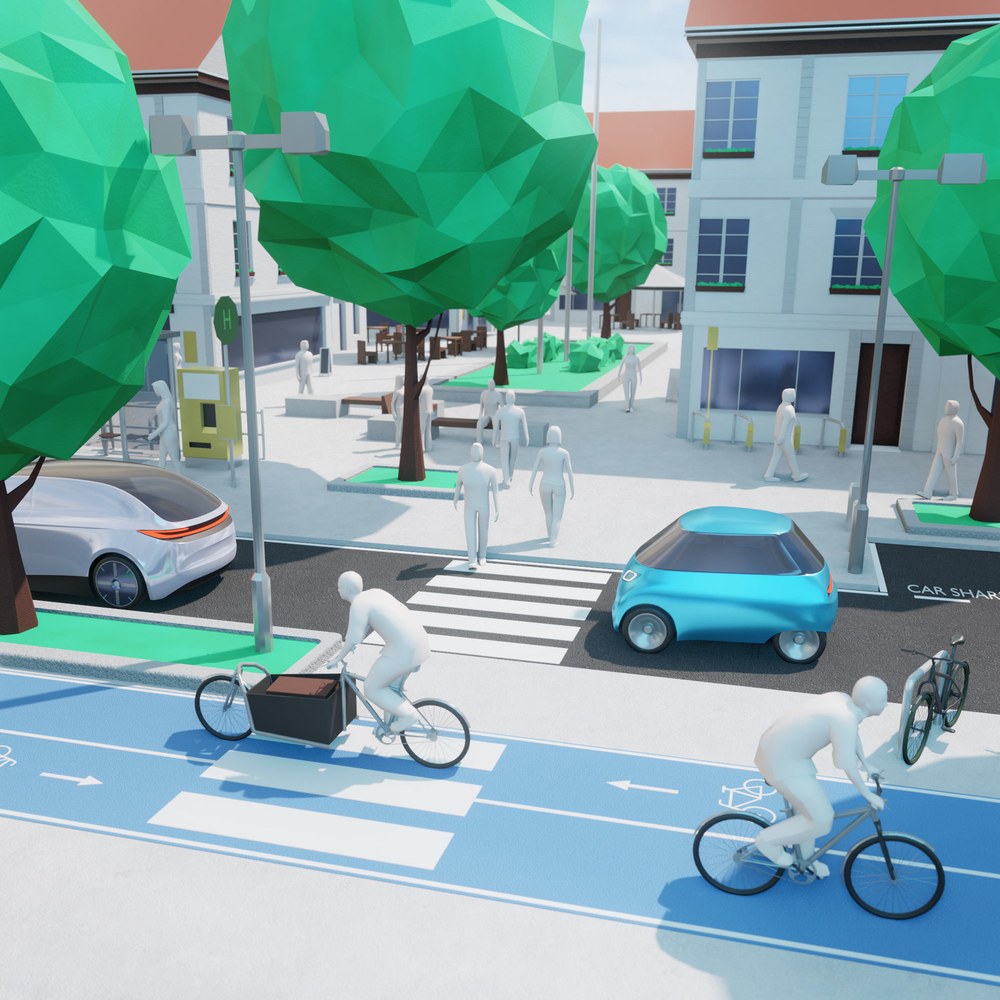LEV 4 Climate Study
Final Report of the LEV4Climate Study.

Light Electric Vehicles (LEVs) have great potential to significantly reduce greenhouse gas emissions from the transport sector and thus contribute to climate protection. Half of the kilometres currently driven by car in Germany could theoretically be covered by LEVs. This would reduce greenhouse gas emissions by more than 40 percent compared to car trips. That would mean around 57 million tonnes less emissions per year. This is the conclusion of a study conducted by the German Aerospace Center (Deutsches Zentrum für Luft- und Raumfahrt; DLR) on behalf of LEVA-EU, the association representing the interests of light electric vehicles.
For their study, researchers from the DLR Institutes of Vehicle Concepts and Transport Research considered the entire portfolio of light electric vehicles. These range from e-scooters, e-bicycles and e-cargo bicycles, electric scooters and motorcycles to three- and four-wheeled small L7e class cars. Some two-seater models are already available on the market.
"Resource-efficient vehicles are an important element in reducing the climate impact of the transport sector – along with changes in mobility patterns and technological advances," explains Mascha Brost, who led the study. With large and heavy cars, a major portion of the propulsive energy is used to move the vehicle itself, while only a fraction is used to move the occupants. LEVs can significantly improve this ratio. Due to their lower weight, the battery can be smaller, thus also consuming fewer raw materials in production and causing fewer climate-damaging emissions.
In Germany, the transport sector is responsible for approximately 20 percent of greenhouse gas emissions. These emissions are stagnating at a high level or, in some cases, even continuing to rise. More than 60 percent are caused by passenger car traffic. The car is still the most commonly used means of transport in Germany. However, on average they only carry 1.4 people and travel manageable distances; 80 percent of journeys are shorter than 20 kilometres. Every day in Germany there are almost 30 million car trips of less than two kilometres and another 30 million of less than five kilometres.
"In view of these figures, it becomes clear that a large passenger car is not necessarily needed for such short distances, and that LEVs are definitely an alternative. They continue to enable individual mobility, but in a much more sustainable way," explains Laura Gebhardt, who analysed mobility data for the study. One example from the study is an electric microcar with a maximum speed of 125 kilometres per hour that could theoretically be used for half the kilometres currently driven by cars. "The production of microcars generates only about a third of the greenhouse gas emissions of a medium-sized electric car," says Simone Ehrenberger, who investigated the life cycle assessment of LEVs for the study. Similar to a car, an LEV allows flexible and individual mobility. Therefore, light electric vehicles are also an interesting solution for regions and times where public transport is not widely available.
In order to realise the theoretical potential of light electric vehicles shown in the study, supporting measures are necessary – for example, increasing the public acceptance of these vehicles. Incentives for purchase and use, regulatory measures, the development of the necessary infrastructure and more comfortable and safe vehicle concepts are also important steps. These issues need to be investigated in further research. Currently, LEVs only occupy a small niche on the vehicle market, in science and on the political agenda.
